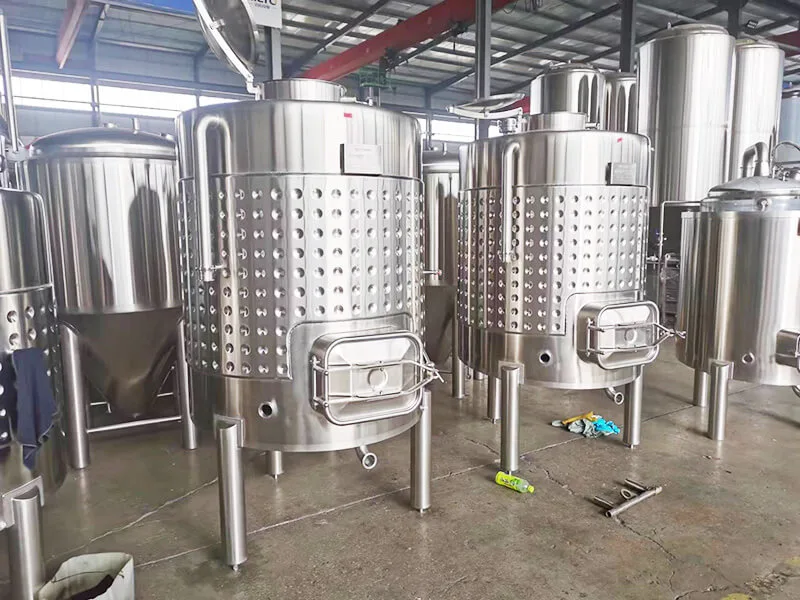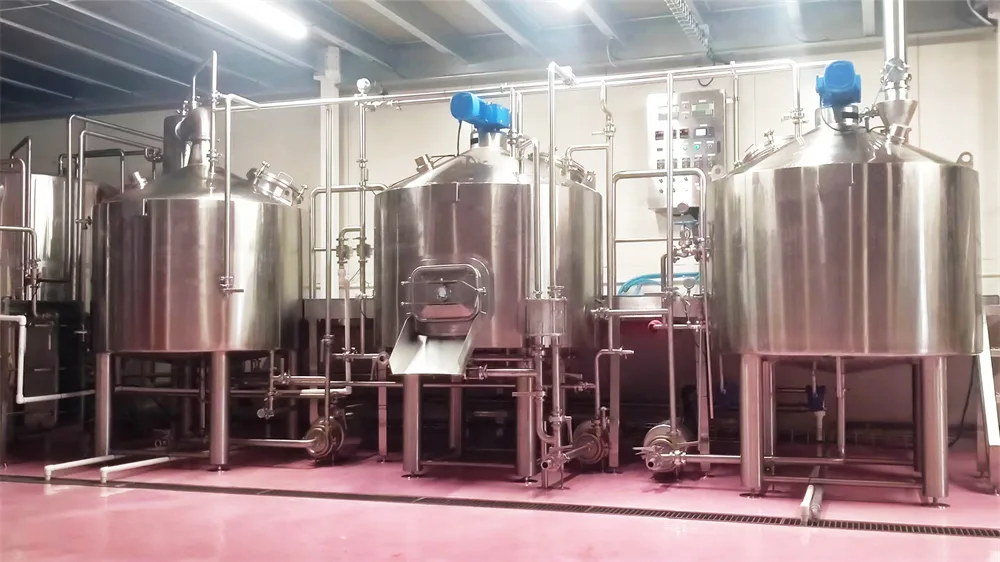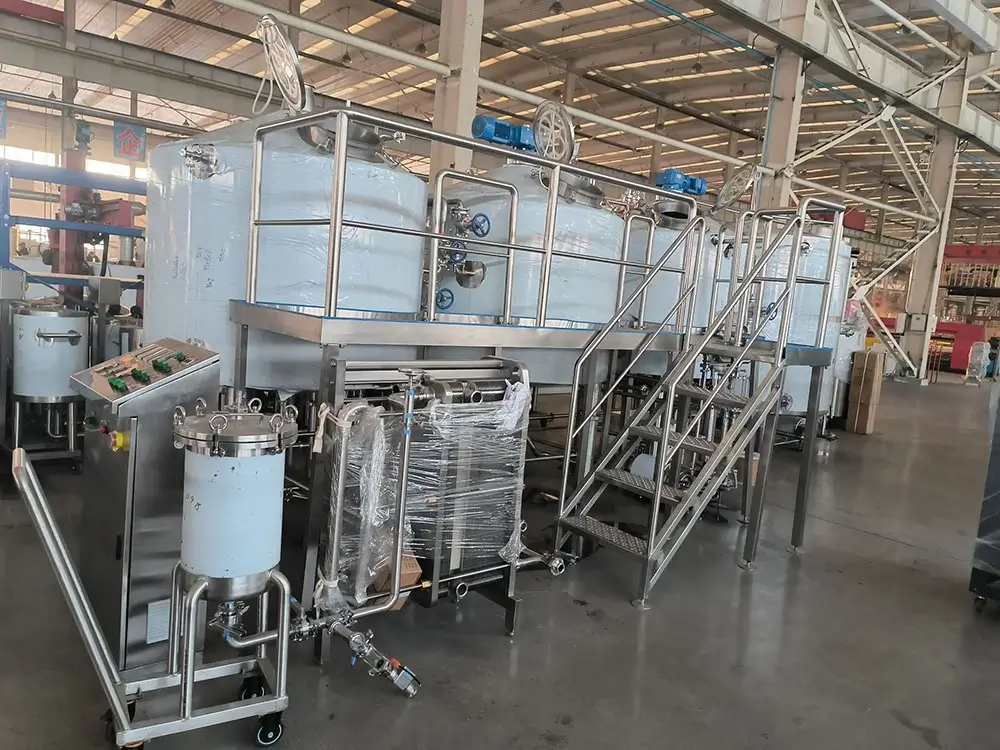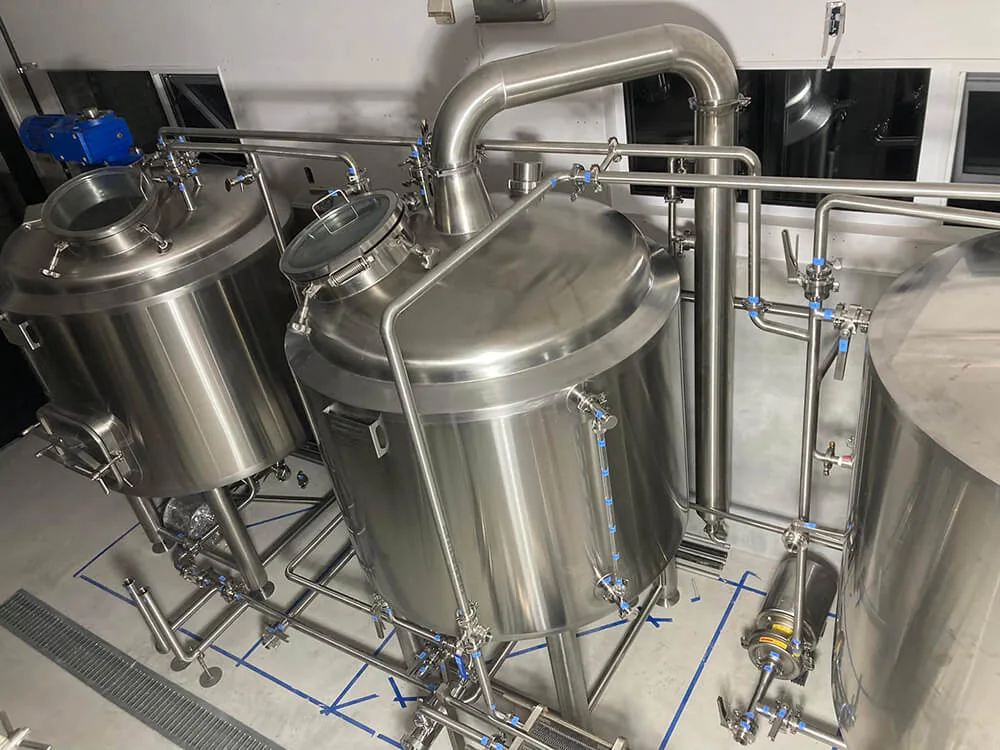Selecting the right wine fermentation tank is a crucial step in crafting exceptional wines. The material and design of a tank directly affect two critical factors in fermentation—oxygen exposure and temperature control. Controlled oxygen exposure softens tannins and enhances fruit aromas, while precise temperature regulation (typically between 79–86 °F) ensures consistent yeast activity and fermentation quality.
Because each tank material offers distinct benefits, choosing the right option can be challenging. Stainless steel tanks provide durability and minimal maintenance, oak barrels add complexity to premium wines, and concrete tanks allow gentle oxygen exchange but demand higher investment. Your choice ultimately shapes both the character of your wine and the efficiency of your production.
Stainless Steel Wine Fermentation Tanks
Key Features
Stainless steel tanks are a cornerstone of modern winemaking. Their precise temperature control systems—often with integrated cooling and heating jackets—allow winemakers to maintain stable conditions during fermentation. The material’s neutrality ensures that the wine’s natural flavors and aromas remain unaltered.
Additional advantages include:
- Corrosion resistance, ideal for handling acidic grape must.
- Smooth, hygienic surfaces that simplify cleaning and disinfection.
- Design versatility—open-top tanks aid cap management, while variable-capacity tanks adapt to different batch volumes.
Benefits for Wine Fermentation
Stainless steel offers long-term durability, resisting oxidation and corrosion even under demanding conditions. Its non-porous surface prevents contamination, safeguarding wine purity. Thanks to its chromium content, stainless steel also exhibits a natural self-healing property, extending its lifespan and reducing upkeep.
Controlled oxygen exposure in these tanks promotes natural yeast activity, contributing to balanced, complex flavors.
Best Use Cases
- Flat-bottom tanks: Versatile, suitable for various fermentation styles.
- Jacketed tanks: Provide precise temperature management—ideal for red wines.
- Conical-bottom tanks: Facilitate efficient settling of grape skins, improving tannin and color extraction.
- Variable-capacity tanks: Flexible for small batches or experimental lots.
- Pressure tanks: Perfect for sparkling wines that require higher pressure resistance.
Whether for boutique wineries or large-scale facilities, stainless steel tanks deliver the reliability and adaptability modern winemakers need
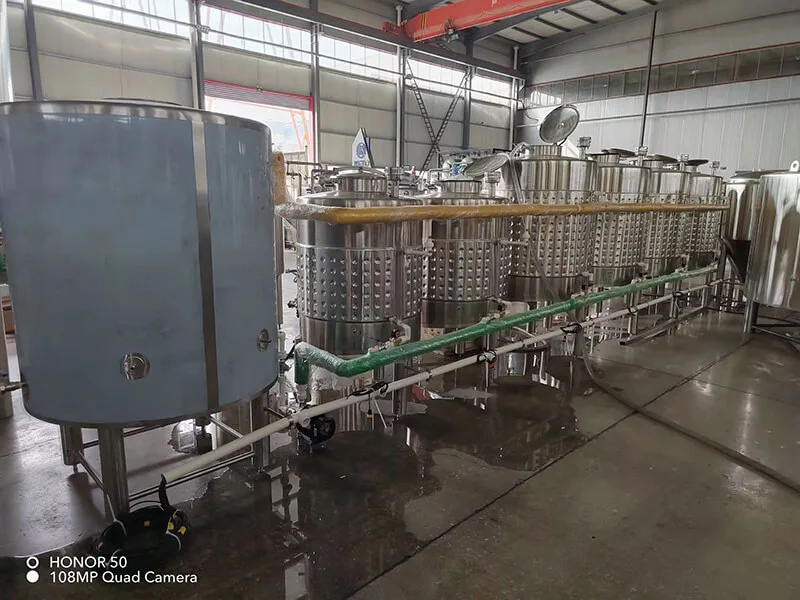
Customizable Wine Fermentation Tanks
Key Features
Customizable fermentation tanks allow winemakers to tailor equipment to their unique needs. Advanced designs now include:
- Precise temperature systems for optimal yeast activity.
- Open-top options for enhanced cap management.
- Automated control systems with smart sensors and IoT integration for real-time monitoring and predictive maintenance.
- Sustainable features such as energy-efficient cooling and durable, eco-friendly materials.
Benefits for Wine Fermentation
Customization ensures that the fermentation environment aligns with your winemaking goals:
- Consistency: Automated controls reduce manual intervention and stabilize results.
- Efficiency: Real-time monitoring of pH, temperature, and oxygen levels maintains high quality while lowering labor.
- Cost savings: Energy-efficient systems reduce operational expenses.
- Longevity: Durable construction extends the tank’s service life.
Best Use Cases
- Premium red wines: Precision control enhances delicate varietals like Pinot Noir or Syrah.
- Large-scale wineries: Automation ensures batch-to-batch consistency.
- Boutique producers: Flexibility for small-batch or experimental fermentations.
- Sustainable winemakers: Energy-efficient designs align with eco-friendly production practices.
Suitability Across Different Winemaking Scales
- Small-scale and boutique wineries: Flexibility is essential. Variable-capacity stainless steel or amphora tanks support limited production while preserving quality. Amphorae, in particular, enhance complexity for artisanal wines.
- Medium-sized operations: Balance efficiency and quality. Stainless steel tanks with advanced controls or concrete tanks with natural thermal stability are strong choices.
- Large-scale wineries: Durability and consistency take priority. Stainless steel dominates here, though hybrid tanks (stainless steel with oak) can provide volume efficiency while adding complexity. Concrete tanks also perform well in high-volume, long-term use.
Key Considerations When Choosing a Fermentation Tank
- Size & Capacity: Match the tank to your production scale.
- Material & Construction: Prioritize durable, easy-to-clean options.
- Temperature Control: Ensure accurate systems for consistent fermentation.
- Accessibility & Hygiene: Opt for designs that simplify cleaning and reduce contamination risks.
Final Thoughts
Choosing the right fermentation tank is not just a technical step—it’s an investment in the signature style of your wine. Meto wine fermentation tanks combine the durability of stainless steel, the elegance of traditional oak, and the innovation of customizable. With Meto, you gain precise control, efficiency, and reliability, empowering your winery to craft wines of exceptional quality and consistency. Align your production with Meto’s advanced solutions and elevate your winemaking to the next level.

